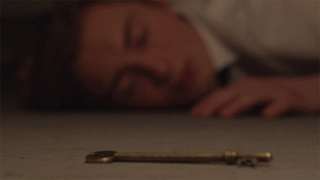Music Video Analysis: Madonna's Like a Prayer
Madonna's hit single "Like a prayer" was released in 1989, a time of racial and religious order and superiorities. In her music video, directed by Mary Lambert, Madonna is a witness to a murder of a white girl by a white gang, while a black man is framed for the crime. She seeks help and advice in a church after the event, in which we see a montage of quick close ups displaying the dominant black mise-en-scene that the church shows in the video.
The video portrays controversial views on racial prejudice and religious attitudes, whilst highlighting the star image of Madonna and selling her to a target audience. The style is concept based but with some narrative and performance structure, telling the story of Madonna's encounter with a black man that's falsely imprisoned. The video includes technical conventions such as lots of close ups of Madonna. Through this, her star image is presented frequently throughout conforming to Dyer's star theory of her image being constructed, and Negus' theory of her synthetic style.
I think Lambert chose to present a mixture of Madonna's synthetic star imagery with racial ideologies, to spark discussions and controversy around the video while obtaining sales from Madonna's fans.
The symbolic conventions in this video clearly show Madonna to be highly sexualised in a religious environment. You can see from her makeup, hair and costume that she is portrayed as a very provocative woman who is highly admired. This juxtaposes with the purity of the catholic denotations in the background. In particular, we see Madonna dancing provocatively in front of a series of burning crosses, the typical sign commonly associated with the KKK. The fact that she's dancing in front of this racial group shows a rebellion against the white superiority and support for racial equality.

The video portrays the black minority to be pure and holy, with a close relationship with God. These ideologies are particularly emphasised by the black representation of Jesus and a close up of Madonna kissing his feet. The technical conventions of camera composition such as the low angle shot of Jesus displays him to be superior. Meanwhile, the white majority is seen as criminals as they murder the woman and visually threaten Madonna not to speak out. Madonna touches on the issues of the black minority seen as criminals and dangerous whilst the white majority are innocent and powerful, and how the church turns a blind eye to that prejudice supporting the white superiority.
The quick montage matching the rhythm of the song shows different objects within the church that show Christianity with black figures. The use of these symbolic conventions show the church to be dominated with the black minorities religious views and love for God. This sparks controversy as Madonna juxtaposes black people including a choir and an intimate relationship with Jesus in at the time a setting viewed with very pro-white ideologies. The Catholic church is portrayed negatively here, as Madonna highlights the discriminative issues the church has towards different races.
Furthermore, women are portrayed as highly objectified and sexualised in this video. Madonna dances provocatively and runs to the church for advice on what she should do. It is clear that she is lost in moral reasoning and helpless to the cause of the crime. She is also seen in an intimate close up with Jesus coming down to kiss her in sexually provocative imagery. Similarly, the victim, being a woman, is also portrayed as weak and objectified by the gang. However, with the help of a female member of the choir, Madonna equips the courage and wisdom to release the falsely accused black man from prison.
Mise-en-scene of Madonna also picking up the dagger surrounded by roses and thorns and cutting her palms, references the crucifixion of Jesus, and strengthens the image of Catholicism and Madonna's association of it with helping the black minority. Furthermore, the police lighting on the black man connotes images of purity and innocence, a controversial view at its time of release.

Overall this video was so controversial, Madonna's deal with Pepsi was cancelled (Pepsi used the song for their commercial), the Vatican condemned it and audiences boycotted products made by Pepsi. In 1989, society leaned towards white superiority and anyone of a different religion, race, and sexuality were seen as abnormal. Madonna created a campaign that was ahead of its time, indicating future and moral views that we are developing today. She additionally touches on the feminist views of that time period and brought these taboo subjects into the media and got people debating about their moral reasoning with these issues. This campaign is still successful to this date, with over 11 million views on Youtube.

















2 comments
well done
ReplyDeleteFor sure... Hot Madonna is in modern culture the new invented old Madonna ! For every believer in her sexy modern style, as she wants: "in the midnight our she can feel my power..."
ReplyDelete